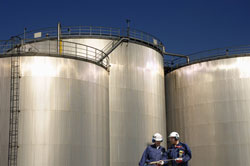New approach to renewable energy
Carbon capture and storage (CCS) technology has recently entered the forum in the discussion on the reduction of carbon dioxide emissions. The challenge of reducing the level of carbon dioxide emissions has been at the forefront of the debate on the environment for many years now. A consensus has finally been reached by policy-makers and scientists alike that at the very least, a partial, decarbonisation of energy use is necessary. This is of course an ambitious challenge to realise in practice. Therefore the exploration of options that go beyond the transition from carbon-intensive fossil fuels (coal and oil) to carbon-poor ones (gas), is duly receiving more attention. The research paper, produced at the Energy Research Centre in the Netherlands, is a continuation of the TRANSUST project. It is based on answers given by members on how the models developed in the project simulate CCS and renewable energy technologies. The TRANSUST project brought to fruition eleven models and the paper states that out of these, only a few actually include CCS and renewable energy technologies. Those that do investigate the long-term significance in energy and climate change scenarios. Recommendations are drawn out from the paper on future model development. Firstly, it recommends that for those models that do not include CCS and renewable energy technologies, headway should be made in terms of the refinement and improvement of their simulation of these technologies. Emphasis is put on the fact that today insufficient attention is being paid to possible external environmental effects of carbon storage. It stressed that in the future attempts need to be made to include its impact in the present generation of integrated assessment models.



